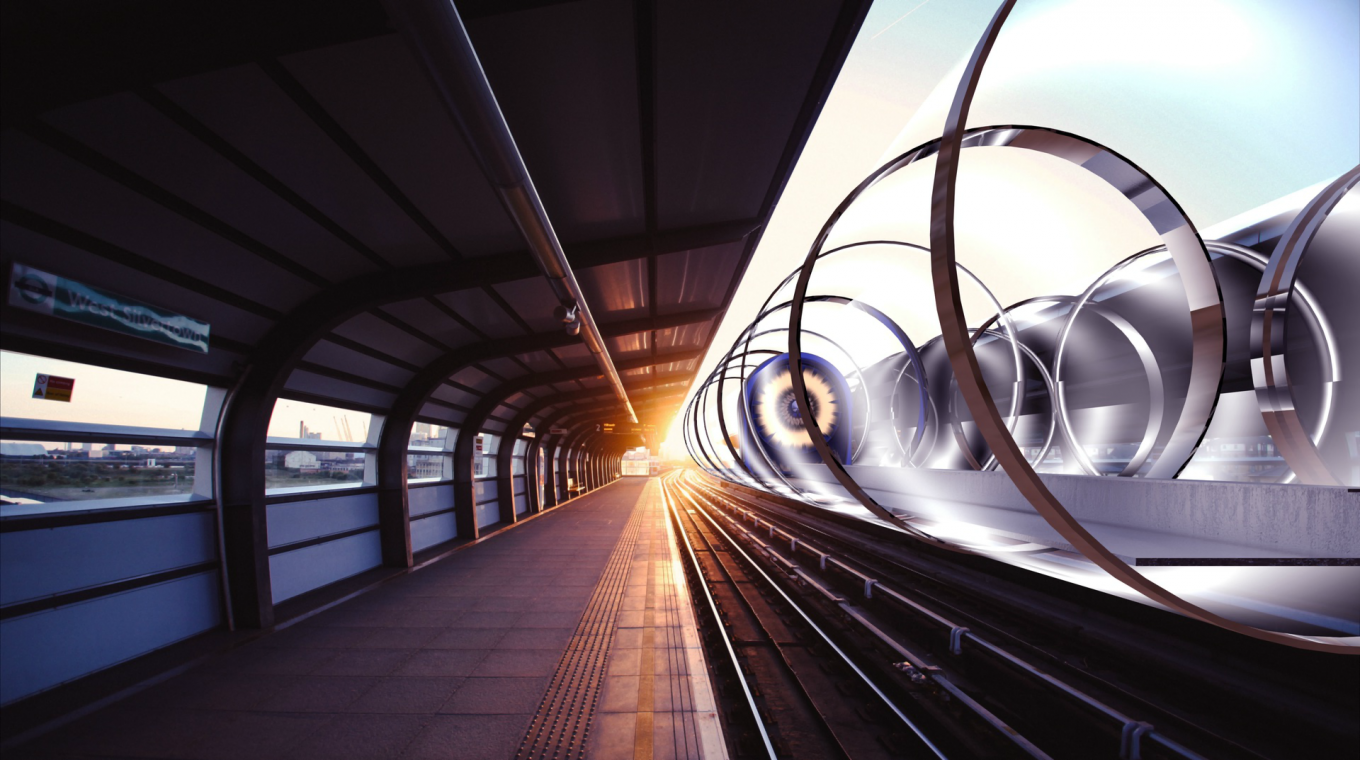
Federico Pistono is a futurist and author, an expert in technologies that are shaping our world. One of those is Hyperloop transportation, which is expected to turn the future of mobility upside down.
“Do you want to know what’s the future of transportation like?
So you have an evacuated tube, you got a tube and you suck out the air. You put a capsule inside with about 30 people, and then you have got magnetic levitation-passive, it’s called Indutrack. And you can just move this thing at super high speed- supersonic of more than 1,200 km/h.”
All by itself, fully robotised, no human hand needed.
Those words, dropped by one of the most brilliant minds of our time, Federico Pistono, feature the beginning of a new era, a not-so-distant future.
It is the next step where AI is wholly implemented in every area of our lives. From houses and hyperconnected cities powered by IoT and driverless cars to drones hovering over our heads delivering parcels and “reading” our facial features to know whether if we are the right recipient or not.
A tale no more though as every one of those technologies mentioned above are already being in development, some in early stages but others already implemented.
A not-so-far Hyperloop Future
The idea Mr. Pistono (Italy, 1985) was talking about is precisely one of those projects which high-stages of development have been achieved. Furthermore, he himself is strongly involved with it.
In his role as Head of the Blockchain at Hyperloop TT, he oversees the very basis of which the hyperloop journeys are going to be based on. These are basically on the ground travels, fully automated and at a 1,200 km/h. Roughly.
It has been described as a better and smarter travel experiences. Passengers and goods will travel in pressurized capsules floating on a frictionless magnetic cushion within the tubes. Capsules are powered by a linear induction motor, an electromagnetic propulsion, and embedded rechargeable batteries. As a result, the system is silent and emission-free.
As if that weren’t enough, “these capsules are engineered and designed to create a safe and harmonious environment for the passengers, with customized interior for use-based experiences. Each capsule is 30 meters in length and can carry 28 to 40 passengers. Also, the system is designed for capsule departures every forty seconds and a maximum speed of 1,223 km/h. For instance, the system is capable of moving 164,000 passengers a day on one line at full efficiency,” said at the company.
This might sound like a really long-term goal to be accomplished, although we have seen recently the first experiences of driverless cars wandering on the streets with
almost no incidents, being Google and Uber the first challengers.
The First Experiences: the Robocars
Entrepreneur Federico Pistono, the ‘Robots Will Steal Your Job, But That’s OK: How to Survive the Economic Collapse and be Happy’ author among others, praise the implementation of these driverless cars, or Robocars, the way he likes to name them.
He highlights 6 major perks of these robocars. A series of traits that would definitely improve the quality of citizen’s lives in cities and said to tackle those daily mobility issues such traffic jams or parking slots.
Robocars will make our street safer. With fewer accidents, they will save millions of lives every year from preventable deaths and injuries.
They will make our cities greener. They will be fully electric, powered by renewable energies, and we’ll need less of them moving around.
They will make us healthier. By reducing the need for parking, they will allow 27% of the space currently occupied in cities by parking and soulless concrete to become parks we can enjoy, taking walks and playing with friends, while breathing cleaner air.
They will make transportation cheaper and more convenient.
They will empower the disadvantaged, making personalized and ubiquitous transportation available to virtually everyone on Earth, including children, the elderly, the poor, and people with disabilities.
They will save us time. Every year, billions of hours of cognitive potential is wasted in a mostly useless, tedious, and inefficient task. It will free our cognitive capacity to pursue greater things.
Robocars or driverless cars are set to change the near future once they are fully implemented (if they are). Although, there are still many questions to be answered which will need extra time and negotiation skill.
Amongst them, it is still to be seen if governments would react for or against them, which should include a regulatation of a whole new range of automated cars and, more importantly, responsibilities out of those cars incidents, or what user’s response will be.
However, those are still human problems, and humans always get a solution. What it is still in the works is the development of the technology that will make it possible. The blockchain and AI systems.

We are in the beginning of the Future
Federico Pistono is a futurist and he describes himself as a technologist. Both make him the perfect tech-optimistic-kind-of-a-guy who deeply believes in technology as the centre of our lives, and the answer of all our problems.
However, he is still grounded enough to see for himself that these disrupt changes might need some time and, also perfectionism.
In a recent interview, he said that the [blockchain and AI systems] technology isn’t ready.
“We haven’t figured out still so many things about Blockchain systems. We are still in the very very early stage of the protocols and of the mechanisms that we are building.
I mean we don’t know how to scale, we don’t know how to do it securely, we don’t know how to do it fast enough. We really don’t have the game theory behind it; we don’t know how all these things are going to be put together. We don’t have the social infrastructure and the technological infrastructure.”
However, the goal is at aim and he feels optimistic on the outcome of these first mobility experiences. Nonetheless, progress can’t be stopped if it is for the greater good, and technology in our days mean actually that.
“A single technology can profoundly impact not just the automative industry, but the transportation sectors at large, the housing market, the job market, the entertainment industry, insurances, the communication sector, our laws regarding immigration, border control, our cities, our landscapes, and how it will empower entire segments of the population that currently don’t have the freedom to move. Just one technology.
Now think of everything else that’s coming. Genetic engineering. Ubiquitous sensors. Internet of things. Artificial Intelligence. Nanotechnology. These are not just buzzwords. They are not far-away science fiction.”
Indeed, they are very real, they’re coming, and they’re going to change our lives in ways we can’t even comprehend.

Hernaldo Turrillo is a writer and author specialised in innovation, AI, DLT, SMEs, trading, investing and new trends in technology and business. He has been working for ztudium group since 2017. He is the editor of openbusinesscouncil.org, tradersdna.com, hedgethink.com, and writes regularly for intelligenthq.com, socialmediacouncil.eu. Hernaldo was born in Spain and finally settled in London, United Kingdom, after a few years of personal growth. Hernaldo finished his Journalism bachelor degree in the University of Seville, Spain, and began working as reporter in the newspaper, Europa Sur, writing about Politics and Society. He also worked as community manager and marketing advisor in Los Barrios, Spain. Innovation, technology, politics and economy are his main interests, with special focus on new trends and ethical projects. He enjoys finding himself getting lost in words, explaining what he understands from the world and helping others. Besides a journalist, he is also a thinker and proactive in digital transformation strategies. Knowledge and ideas have no limits.










